Text
Questions to Develop Your Setting:
How does your overall setting reinforce your theme?
How does your overall setting effect your plot?
In the setting for each scene, what can the five main senses (sight, sound, taste, touch, smell) detect? It doesn’t have to be in your story, but knowing the smell and taste of every location might guide the feeling you write.
How might the different characters in your story describe the settings?
What is the weather? If it’s cold or hot, are the characters dressed for it?
There are more weather phenomena more than just rain. Could high winds, thunder, hail, lightning, snow, fog, humidity, excessive clouds, or heat waves play a part in the weather of your setting?
What the main colors in each setting? Why? Do the characters’ colors match or stand out?
What if you picked a different setting and swapped it in? Brazil instead of the US, a small town instead of a city, a beach instead of an alleyway? If there’s little or no difference to the story when you swap it, the setting might need more development.
Are any settings reused in different scenes? If so, how do they change between scenes? If not physically, how do they take on new meanings for the characters throughout the story?
What are the most frequently used or important words you used to describe your setting?
Try asking a reader or a friend you’ve told the setting to describe what they think the setting sounds like back to you.
🌄 Good luck writing great settings, y’all! 🌇
36 notes
·
View notes
Photo
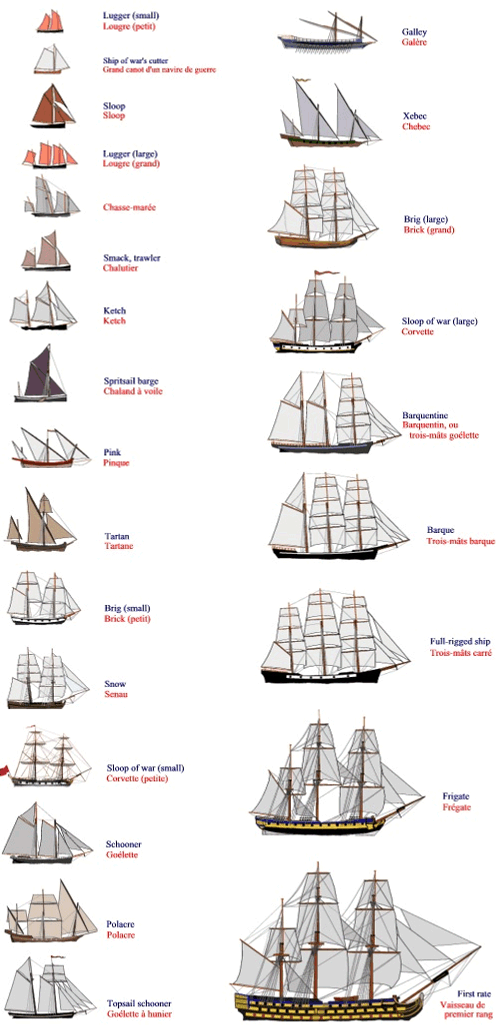

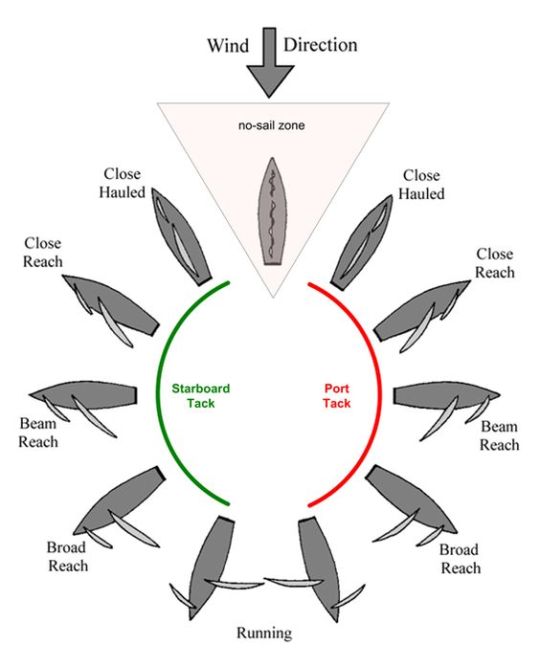
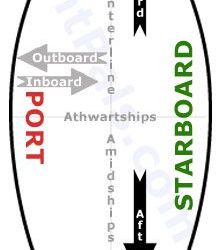
Types of Ships
Parts of the Ship
Wind Directions
Sides of Boats
63K notes
·
View notes
Text
A Short Essay About Gaucho Knives: Facón, Daga, Cuchilla and Puñal
The different knives used by gauchos,and some interesting coincidences and a common root between puñales and Bowie knives.
by Abel A. Domenech | Ethnographic Arms & Armour

We generically term the different types of edged weapons used by gauchos in the past as cuchillos criollos (creole knives). We employ this generic name as the gauchos didn’t use just one class of knife, but would employ different ones depending upon their personal tastes, customs, or what they could find or acquire.
About the Gauchos
The gaucho was a specific human type: a free man, always changing of settlement, with no personal land, few personal belongings and no boundaries. An excellent rider, hunter of wild cattle, with no employer and no fixed job, he preferred to be an errant rider crossing the silent and deserted big plains. Gauchos appeared as a result of the crossing of the blood of the Spanish with the local Indians and it is generally believed that the gaucho first appeared in those territories of what today is the Republica de Uruguay, on the North bank of River Plate opposite from where Buenos Aires is situated. Gauchos quickly spread across the River into territories of what today is known as Argentina. All those territories were then known as Virreynato del Rio de la Plata and were under the control of the Crown of Spain. There was no division into the present countries of Argentina and Uruguay in those remote times (XVII to beginnings of XIX centuries). Both the gauchos of Uruguay and of Argentina have very similar characteristics in customs and clothing. A somewhat different type of gaucho also developed later in the southern region of what today is Brazil, in the Rio Grande do Sul zone. What we can call a ‘gaucho type’ went under several different names during the XVII century, being called changadores, arrimados, amiluchos, gauderios, etc. before being called gauchos for the first time, probably by the end of the XVIII century.
In those early times, these gauchos of the River Plate area had encounters with gangs coming from neighboring territories in dispute with Spain and under control of the Portuguese Crown (presently the southern territories of Brazil), who crossed the frontiers while smuggling, committing robberies, etc. Of course, those encounters were very far from being friendly ones! The gangs of tough Portuguese speaking men were astonished to see the long bladed knives used by the Spanish speaking gauchos, which were too short to be called swords and too long to be called simply as knives. Therefore, they called them “big knife;” “knife” in Portuguese is faca, and the noun for “big knife” is facao, which is pronounced approximately as facáun. When Spanish speaking gauchos heard that funny way of calling their big knives, they liked it, and adopted the phonetic in Spanish language, as facón.
It has to be explained that the first Spaniards’ settlements around the coasts of the River Plate were made around the 1530s and subsequent to their initial failure, many of the few horses and cows brought from Spain gained liberty and escaped to the great open plains which offered these animals ideal conditions of grass, water and mild weather. These initial small herds gave rise with the passing of the following 150 years to the huge herds of thousands and thousands of cimarron (wild) cattle (both horses and cows) which astonished the voyagers who arrived in these lands in the following centuries after the first foundations of Buenos Aires.
These huge herds gave origin to a large local industry based upon the chasing and hunting of wild cattle just to take their hides for export to Spain, which required the special permission of the Cabildo Institution, which represented the King of Spain in our lands. These expeditions required many men working as hunters, killers and skinners and also soldiers to protect against Indian attack. Of course, many entrepreneurs found that more profitable business could be made organizing their own non authorized expeditions to get the cattle and smuggle the hides to other markets in Europe.
Gauchos were men of the frontier and recognized no Law, no King, no Patron and they committed robberies and other felonies and, as such, were pursued by the Law. Their services as knowledgeable men of the plains were required from time to time by owners of big rodeos of cattle or by the chiefs of the expeditions organized by the Cabildo to hunt wild cows and get their skins. This helped to put an end to the pursuit by the Law, at least during the course of those authorized expeditions. But then, they also hunted wild cattle for themselves, without the required Cabildo permission, and smuggled the skins for their own profit or were employed by the organizers of the non authorized expeditions. Later, in several stages of our history, they were forced to form part of the regular Army and, badly armed and badly equipped, were employed in the Independence and Civil wars and during the war against the Indians, under orders of military brass, politicos or civilian leaders.
Keep reading
150 notes
·
View notes
Photo
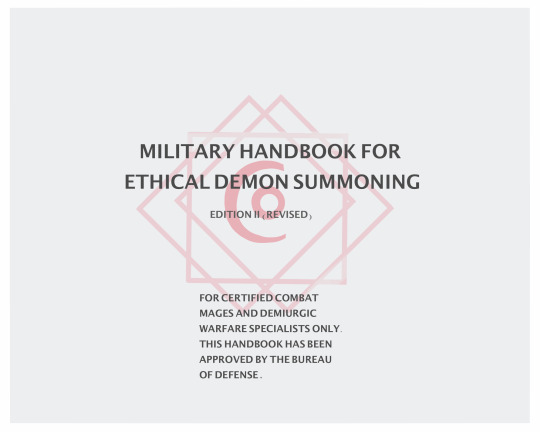
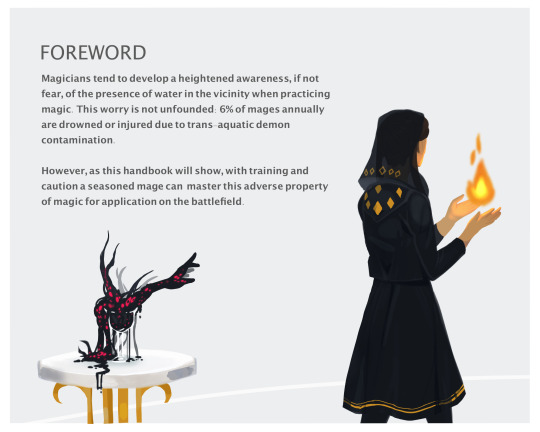








This is finally done: a more concise description of demon summoning. This kind of handbook would probably have been given out to all the military cadet mages. For further reading:
[Detailed Explanation of Demonic Constructs]
[Examples of Amalgams]
[Magician Character Reference]
[Amalgam Character Reference]
99K notes
·
View notes
Text
Let’s Talk About Plot

So this has been a highly requested post as of late, so I thought I’d spend a little extra time talking about plot. What is it? How does it work? What constitutes plot? I get these questions a lot and the more I think about it the more insanely philosophic the conversation starts to get, but I’m too pragmatic to get into that here. Let’s get to the root of it.
Keep reading
596 notes
·
View notes
Text
8 Character Creation Tips (for DnD or just writing in general)
1. Have a goal

While it may sound like I’m stating the obvious here, your character needs to have something they want to accomplish. Maybe they want to be the best at something, see a place, fall in love, conquer the world, or something else. Whatever it is, they need to have something that they desire beyond all other things. Ideally, give them more than one goal. Make them have to sacrifice one to achieve the other, to add extra drama
2. Have a reputation

Maybe they’re the best artist in their class or they’re great at juggling. Perhaps they slipped on the stairs in front of their whole village. Either way, give something for the locals to remember about them. That way it can give you a starting point for the interactions with other characters
3. Have a friend

Whether a friend, a coworker, a sibling, an army buddy, or someone they saved, have someone close to your character whom they’re close to and wish well. Yeah, angsty “I have no friends” characters can be fun, but in small doses; eventually the reader gets fed up with them. At the very least the character needs someone to talk to or bounce ideas off of
4. Have a home

It may be a neighborhood they grew up in, their parents’ house, or a room they’ve been renting in a tavern. Hell, it could even be a person if you so choose. Everyone needs to feel secure at one time or another
5. Have a signature item

Now, recognize that this may not work for EVERY character, but it’s up to you to decide what will fit and what won’t. In many cases, it can work. A signature item is something that is recognizably YOUR CHARACTER’S, be it a weapon, a scarf, a toy, or a piece of jewelry. It’s something that makes them feel like themself
6. Have a problem

This should be something other than the problem addressed in the main plot line. Maybe a member of their family is sick, they are broke, or they’re failing their classes. This helps make your character seem more realistic because NO ONE has one problem at a time
7. Have a secret

This can affect the plot or not; either way, it helps make your character more well rounded. Maybe your character can’t read, left their crewmates to die when a kracken attacked their ship, or made their long lost sister run away. If you choose to have it affect the plot in any way, this secret should embarrass your character, make it so that other characters don’t trust your character, or somehow endanger them and the people they’re close to if found out
8. Have a reason to be brave and to fight

Maybe it’s because your character wants to be like their hero, maybe it’s so they can repay a debt (like if someone saved their life previously), maybe it’s for their child, but your character needs to have a reason to occasionally face their fears
Have fun!!!
36K notes
·
View notes
Photo










John Martin
English painter
Romantic
(1789 - 1854)
6K notes
·
View notes
Text
Architectural Nomenclature for D&D and Authors
Here is a series of diagrams I made while I was making the D&D 5e Masonry profession stuff. It’s basically a helpful guide to help describe parts of buildings, windows, and doors for us non-architects out there. Use these to narrate your dungeon using accurate descriptors, or be inspired to decorate the dungeon with these new terms! You could make corbels that are shaped like owlbears, or socles carved like dragon’s claws. Especially useful to describe where secrets can be hidden, like the lintel of a door or pilaster of a wall. I recall needing to look up the term “lintel” when there was a secret lever built into one in the Shrine of Tamoachan, so there’s definitely a use for it.
Keep in mind that some of these parts can be used for other objects, particularly furniture. For instance, a table can have an entablature and cornice, just like a roof can. A pediment can exist above a door or window. A reliquary can have crockets and pinnacles like a cathedral.
I learned a lot about architecture while researching stuff for Mason’s Tools, and wanted to share it with you guys! Remember that a wide breadth of knowledge can help you become a better overall DM!
Gothic Cathedral

Hellenistic Temple

Crenellated Wall

Interior Wall

Doors and Windows

Roofs and Domes

Arches and Vaults

Architectural Patterns

Other Decorative Terms:
Urn: Yes they put them on buildings, not just in dungeons.

Festoon: A wreath or garland hanging from two points. If it depicts cloth it is known as a swag. So yea.

Dentils: Originating as the ends of rafters, these became decoration that is repeated below a roof’s cornice. Their name means “teeth.”

Acanthus: This is the leaf that you find in a lot of architecture, especially as the capitals of Corinthian columns.

Diapering: Weird name, but basically anything that is a repeated pattern usually based on a grid that breaks up an otherwise flat space. Apparently the name comes from the Greek dia (cross/diagonal) and aspros (white)

Fleur-de-lis: If you weren’t familiar with it already, that’s what this is called:

Well that about wraps it up for today. Hope everyone was able to learn something today!
12K notes
·
View notes
Text
Just in case this needs to be said:
It’s the first draft. Use the word “suddenly.” Put as many dialogue tags and adverbs as you want. Say “he saw” “she remembered” “she felt” “they wondered” as many times as you need to. Put the em dash there, put in too many commas, use semi-colons with reckless abandon. Type in [whatever] instead of thinking up a title for something. Just write it. If you worry too much about the particulars, about all the advice posts you’ve seen saying whatever you’re doing is wrong or not good enough, you won’t get anything done. It will slow you down as you go back and try to reword what you just wrote to make it better, proper. The first draft doesn’t have to be perfect. It just has to be done. And when you get to the end, you’ll find that all those “mistakes” are just clues for your future self to put together to make it all better.
Putting in adverbs and certain dialogue tags are a note for you as to who is saying something and how they’re saying it. When you’re editing, you can make sure it shows through the story instead. The word “suddenly” is a reminder to make things more abrupt. The first draft is just you mapping out where you want to go and how you want to get there. Don’t waste time trying to get it 100% right now, because then it will never get done. Don’t think too much– just write. Save the thinking for editing later.
61K notes
·
View notes
Text
100 OC Questions
1. How do they present themselves to others? 2. Do they like animals? 3. How do they dress? 4. How many languages do they know? 5. How big is their family? 6. What is their purpose in the story? 7. Do they know how to fight? 8. What is their back story? 9. Why is their name, their name? 10. Do they have any nick names? 11. Do they have a romantic interest? 12. How do they cope with struggles? 13. Do they have anyone they can lean on? 14. How do they react to someone dying? 15. Can you name 5 personality traits they have? 16. How did they become a character? 17. Do they get along with others? 18. What flaws do they have? 19. How do they influence the story? 20. What do they look like? 21. What are their hobbies? 22. What are their ticks? 23. Do they like children? 24. How do they react to being around wild animals? 25. If they were given the task to prank someone, who would it be, what would they do, and would the prank work? 26. Do they have any survival skills? 27. Are they more book smart or street smart? 28. How do they get out of a difficult situation? 29. Do they use their body, mind, personality or force to get what they want? 30. What music do they enjoy? 31. How do they overcome obstacles? 32. When faced with a difficult decision do they get stronger or break? 33. Do they have any special powers? 34. How do they change throughout the story? 35. Do they have any friends? If so, are they close knit? 36. How is their family life? 37. Are they likable? 38. Are they the hero, or anti-hero? 39. Do they make questionable choices? 40. How do they become who they are? 41. How was their childhood? 42. Are they close with anyone who is going to screw them over? 43.How do they adapt to different situations? Do they adapt at all? 44. How do they speak? Examples - Are they soft spoken, hot heated, vulgar 45. Are they opposed to violence? 46. When is their birthday? 47. Are they quick to judge? 48. Do they have anything they are trying to hide from others? 49. Do they act different around different people? 50.Do they enjoy the arts? 51. Do they like science? 52. Are they more emotional or logical? 53. How do they deal with their emotions? 54. How do they cope with sadness? 55. What is something they care about? 56. Would they die for anyone/anything? 57. What do they do when they are happy? 58. How would they come across to other characters? Examples- messy, lazy, childish, caring ect 59. Do they have a phrase they use over and over? 60. In a crowed room are they in the corners, sides, or in the middle? 61. Are they comfortable being in a crowed room? 62. How do they relax? 63. Have they ever harmed anyone and regretted it? Verbally or physically? 64. Do they like to dance? 65. How do they get around their environment? Examples - horses, bike, vehicle 66. What is their pet peeve(s)? 67. Do they have a disability? 68. How do they react to getting flowers? 69. Would they ever wear a flower crown? 70. Do they like themselves? 71. Who do they dislike? 72. What is their motto? 73. Do they have any markings on their body? 74. Have they ever been abused? 75. What is their biggest fear? 76. What are their goals? 77. How do they go about achieving their goals? 78. Do they have a fight or flight response? 79. Is there someone in their life that they care about more than themselves? 80. How would they fair in zombie apocalypse? 81. Do they have any tattoos? If so, are they significant? 82. Are they good at mental math? 83. Do they get along with others? 84 Are they lazy? 85. Are they self motivated? 86. How do they cope with anger? 87. Have they ever been in a situation where they were helpless? 88. Are they organized or messy? 89. Can they remember a lot of information at once? 90. What is their occupation? 91. Do other characters respect your OC, if so, is it out of fear? Or do they respect your OC because they like them? 92. If they were given minutes to live, what would they do? Who would they want to see and say? 93. How do they deal with stress? 94. Do they have a more submissive or dominate personality type? 95. Do they have a pet? 96. Do they have a stash of weapons? 97. Where do they live? Who do they live with? 98. How do they calm themselves down? 99. Are they co-dependent? 100. Are they a day, or night person?
9K notes
·
View notes
Text
Random Worldbuilding: Creating Noble Titles
[by Justin Alexander / The Alexandrian, September 20th, 2018]

Nefarious noble scheming has long been a staple of fantasy fiction, and it quite often makes the leap to space operas and the like, too. (Herbert’s Dune, for example.) Figuring out what the local nobility is up to in your campaign, therefore, can be an endless font of drama, intrigue, and scenario hooks.
A great deal of effort can be spent trying to get it “right”, but this is often an illusory goal. If you’re running a specifically historical campaign, then there will be a “true” version of how nobility worked for your chosen place and time period. But beyond that point, the historical norms of noble titles are so utterly varied by region, country, and time period that anyone insisting that there is, for example, one “correct” relationship between Dukes is, at best, deceiving themselves.
For example, depending on where and when you’re standing in history, a marquis could be:
A nobleman who controls an Imperial territory
A ruler of a border area (originally because those were the ones under Imperial control; but later simply because they were border territories)
A noble more powerful than a count and less powerful than a duke
A noble more powerful than a count and less powerful than a duke, but specifically because in this country dukes have to be members of the royal family
A synonym for “count” because the distinction between “count” and “marquis” has been bureaucratically blurred out over the past several centuries
A noble subservient to the king, but whom counts consider their liege
A courtesy title, often assumed by the cadet lines of noble familes
Any number of completely unrelated things in Asian cultures for which the term was used in translation
One you realize that there is not, in fact, an ultimate truth to be found here, you’re freed up to make up you own noble traditions and relationships that are peculiar to the fantasy realms you choose to create.
This can often include making up entirely new titles. For example, in my D&D campaign world, the title of Syr dates back to a pre-historical empire. In addition to being a noble title (usually of regional leadership), it’s also the faux-etymology behind a male knight being referred to as “Sir” and female knights being referred to as “Sera”.
(And if you’re thinking, “Wait… aren’t female knights referred to as Dames?” That’s right. You’re starting to get it.)

A TANGLE OF TITLES
We have a tendency, when creating fictional worlds, to create things which are altogether too tidy. In the real world, things get messy: The Gregorian calendar, for example, is a hodgepodge of historical kludges and political compromises piled one atop another.
To make your world feel real — to make it feel like a place where people actually live — you’re going to muck it up a little bit.
For noble titles, you can achieve this with a three-step process:
1. Create a system which makes perfect logical sense.
For example, there’s the King. They’ve got a bunch of powerful Dukes who have sworn allegiance to them, and each Duke has either Counts (who rule inherited lands in the interior of the country) or Marquises (who rule over inherited lands on the border of the country) who have sworn allegiance to them.
2. Create just two exceptions: One grandfathered in from some other system. Another that’s newfangled and recent.
For example, in addition to the Counts and Marquises, there are also the Atabeks, druidic lords who swear fealty directly to the king, but who rule over nomadic tribes rather than specific pieces of land. More recently, Harald IV disbanded the duchies of Baudore, Hensfelle, and Ramsey fifty years ago because their dukes were possessed by demons. The Counts and Marquises who once swore fealty to those dukes now swear their oaths directly to the king, with no intermediary.
At this point, you’re done for now. Put your noble titles aside and either continue worldbuilding or get back to playing.
The goal here is to introduce a few cracks into your perfect system. Marring the perfection from the beginning is important because you’ll tend to want to preserve something that’s unbroken and “makes sense”. Once you’ve broken it a little bit, though, you’ll find yourself more open to the next step…
3. Whenever the current system doesn’t quite work right for your current adventure… add an exception.
For example, maybe you discover that the Free Cities were founded by Atabek-led tribes who settled into an urban life, resulting in some Atabeks functionally being mayors. (Because the PCs went to a Free City and you needed to figure out how their government fit into the existing system.) Or you discover that some counts are actually religious men who act as liaisons between religious land-holdings and the royal government, and that these noblemen are given the title of Vicomte. (Because you thought the imagery of an evil religious nobleman who rules out of a gothic cathedral was cool.) Or maybe it turns out that the marquises weren’t always inherited titles and, technically, the king can still create non-hereditary marquises, and will do so sometimes as a way of elevating knights who have proven worthy of greater reward. (Because you wanted a foppish city-born noble to act as a foil for the PCs… and then later realized that a title of Marquis would be a cool reward for the PCs to receive after saving the kingdom.)
In other words, don’t try to lay down all the messy complexities of life in one fell swoop. Layer it in as necessity requires.
That’s the way it happened in the real world, after all.
[source]
466 notes
·
View notes
Photo

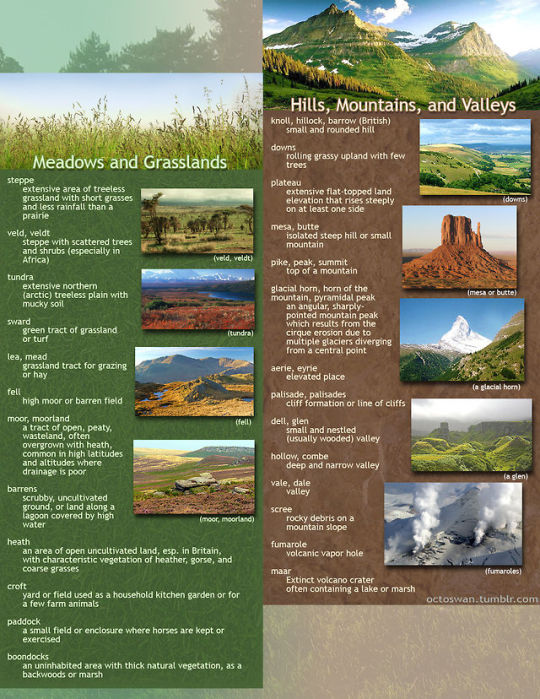



I made these as a way to compile all the geographical vocabulary that I thought was useful and interesting for writers. Some descriptors share categories, and some are simplified, but for the most part everything is in its proper place. Not all the words are as useable as others, and some might take tricky wording to pull off, but I hope these prove useful to all you writers out there!
(save the images to zoom in on the pics)
216K notes
·
View notes
Note
Is it okay to have chapters full of character development even if they don't make the plot progress?
Honestly, it’s okay to do whatever you want to do. If you’re wondering whether or not people will like chapters focused solely on character development, then I have good news for you. Because plot and character are designed to be linked together, I bet that your character-development chapters are doing more for your plot than you realize. Regardless, let’s break down different types of “character-development” scenes and see where you’re at.
Character Development vs. Characters Arcs
I think this is a good place to start with this post. Every novel should have a plot or subplot that explores the main character’s transformation. And yes, you better have a transformation of some kind. For a story to be effective, the plot should be big enough that it changes your characters in some way. Think about who they are at the beginning and imagine how their experiences throughout the novel change them. This is what creates your character arc.
Character development is such a big, bold term that many of us just throw around to describe anything character related. But let’s look a little deeper. Development is about shaping and molding your characters, as if you were sculpting them from a mound of clay. The more details you include, the more vivid the character. And when you do something unexpected with these details (avoiding cliched characters), you create pieces of art that intrigue readers and make them like the character even more. Development is your process of defining the character.
You know you’ve done your job well when you (the writer) can predict a character’s actions or reactions in any situation, regardless of whether or not that situation actually occurs in the novel. Challenge yourself with this. What would they do as a bystander in an armed robbery? How would they react to losing their job? What would they say if they discovered someone had lied to them?
This is what character development is. When it comes to character development within your novel, you’re attempting to translate what you already know about your character to your readers. The most effective way to do this is to show it. Put them in scenarios that reveal who they are.
If you’re spending entire chapters simply listing a character’s attributes and describing how they respond to vague situations and scenarios, then you’re telling. This is where I would caution a writer to avoid chapters entirely devoted to development. Readers don’t want character traits to be relayed to them; they want them to be demonstrated.
Character Development Scenes
Alrighty, moving ahead. So we’ve eliminated scenes where you’re simply writing a character description. What about scenes where you do show who the character is? What if you write that armed robbery scene to show how they respond in a tense situation, and it turns out that this armed robbery has no bearing on the rest of the plot? Is this okay?
It can be. Assuming the reaction to the armed robbery leads to change. Because in any challenging moment, a character will experience an immediate action and a followup action. The immediate action encompasses what they do in the moment. Did they try to disarm the person? Did they attempt to alert the police in secret? Did they try to run away? The followup action is how they approach new decisions given this new experience. The fear of death in that situation may lead them to take action against other (plot-related) events in their life. They may receive an injury that impedes their progress or forces them to adapt. All of this impacts how the character approaches the internal and external conflicts. In other words, the armed robbery served to move the plot forward, despite its initial disconnect from the main event.
Maybe the character-development scenes you’re thinking of are less intense. Maybe they’re introspective walks or light-hearted conversations.
For the latter, remember that dialogue should be purposeful. A humorous jab or quippy exchange is delightful and fun to read, but if you’re going to spend a lot of page real estate on nothing but playful banter between characters, you better be building to something. Good examples of this would be the relationship eventually falling apart or being challenged.
When it comes to introspection, you should be building to a decision. A character that thinks back through recent events should be doing so in an effort to devise a strategy. An introspective walk should be because “Hell, I don’t know what I’m doing anymore. Maybe if I take a walk and clear my head, I’ll figure it out.” When they’re thinking, they’re preparing to act. And that is related to your plot in a BIG way.
The Flashback
Okay, I’ve been answering questions on Tumblr for over 4 years now, and this has come up many times. The flashback is the number one culprit for gratuitous character development. We writers take a considerable amount of time coming up with complex backstories for our characters and nothing kills us more than spending time on material that no one ever gets to see. So it’s only natural that we push to include flashbacks in our novels, so that we not only get to write these exciting histories, but readers get to enjoy them too.
Often, the problem is that whatever past is being shared in the flashback has no bearing on the current conflict. Whatever it is has long since been resolved. So writers start to get worried that the flashback fails to move the plot forward, which is something they’re told that every single scene should do.
Obviously novels where past events affect the present timeline should have flashbacks. These are novels where timelines are interspersed to tell a complete story. One of my favorite novels I read this past year was The Lock Artist by Steve Hamilton, which features dual timelines. Eventually the past catches up to the present, and we move forward for the rest of the novel. This type of situation is definitely okay.
Flashbacks that do nothing but reveal something of the character’s past can work…as long as that flashback is contributing to the character arc. Remember, our character arc is showcasing our character’s transformation. If you can justify this flashback as being relevant to where the character started and how they will change, then it will probably work without being superfluous.
Plot Development Can Be Unpredictable
In spite of all this, don’t forget that your plot evolves as your character evolves. We often don’t really know our characters until we start writing them. This means that any plot decision we’ve already made can change in a heartbeat as our character’s development takes an unexpected turn. Be willing to adapt to these changes and let your character development impact what happens.
Characters should affect your plot. So when you look at that way, a scene that focuses on character development always has the potential to move your plot forward.
-Rebekah
1K notes
·
View notes
Video
youtube
Early Modern England : Crime and the Law
Yale Courses - Early Modern England: Politics, Religion, and Society under the Tudors and Stuarts (HIST 251)
In this lecture Professor Wrightson examines the problem of order in early modern society, focusing on crimes of violence and upon property crime. In examining violence, he notes the existence of special cases geographically (the borderlands) and socially (aristocratic violence) before looking at the lower (and gradually declining) levels of homicide in general. He then considers property crime, distinguishing the various categories of theft and the manner in which cases were brought to, and handled in, the courts. The late sixteenth and early seventeenth centuries witnessed a peak in prosecution, but while the law could be harsh and bloody in meting out punishment, it was also characterized by discretionary extension of mercy. Interpretations of the use of such discretion are compared and assessed – as are the limits that existed on its use in a society that believed in the deterrent effect of ‘exemplary punishment.’
00:00 - Chapter 1. The Question of Violence
03:25 - Chapter 2. Examples
11:01 - Chapter 3. Responses
16:48 - Chapter 4. Homicide
23:16 - Chapter 5. Property Crime: Capital and Non-capital, Clergyable and Non-clergyable
27:47 - Chapter 6. Incidences
34:52 - Chapter 7. Responses
40 notes
·
View notes
Text
A list of cliche things I’ve learned from writing the first draft of my novel:
- Don’t expect perfection. I spent about six months writing and rewriting the first chapter so I could make it ‘perfect.’ Eventually, I moved on. The first chapter didn’t even matter, because now I have to rewrite it. I learned more from finishing the book than wasting time on trying to perfect the hook sentence.
- The novel will go through changes, even as you write. So, I expected my story to be about people getting lost in the woods under mysterious circumstances. I had a better idea halfway through. It was more dynamic and it impacted my characters on a deeper level. So, what I thought was going to be the plot of my novel, became just a plot thread. It’s okay, be loose. You’re probably going to rewrite the whole thing anyway.
- Dedication is key, but don’t burn yourself out. I wrote every day, with the goal of writing 500 words a day on average over a month. Rather than setting a daily goal, I chose to average out my goal, just in case life got in the way. I found it super helpful considering I was working and going through school.
- Love thy characters. You’re going to be spending a lot of time with them. Make them interesting, make them flawed, make them real. Love them… But love their pain more.
- Finishing may not feel so great. I spent months with these characters. I helped them along their journey, and writing gave me a sense of purpose. It was something I looked forward to every day, the only thing I could think about. One day, it was over. I didn’t know what to do with myself. But there is a silver lining…
- It’s not over. Writing is rewriting. I finally got to read my novel, after letting it sit for a few weeks. It’s terrible and I love it. All I could think about is rewriting it. Today is the day.
Good luck on your writing journey.
4K notes
·
View notes
Text
reblog if you:
ARE GAY
ARE POWERFUL
LOVE YOUR PARTNER
SUPPORT OUR TRANS BROTHERS AND SISTERS AND OUR AMAZING NONBINARY SIBLINGS
no one will ever know which one
87K notes
·
View notes
